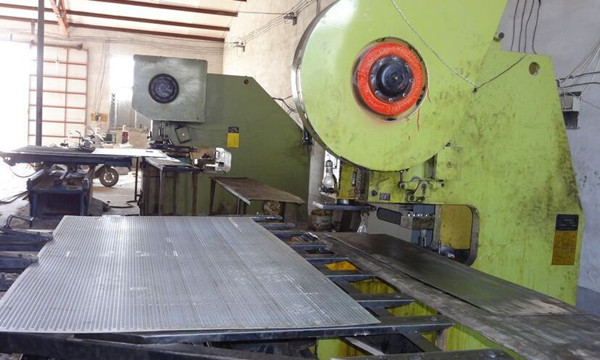Why Perforated Stainless Steel Sheet Is More Difficult to Manufacture Than Other Materials
Source:www.cn-psp.cnAuthor:河北森驰公司 Last updated:2025-06-14 17:00:29 Browse:
In modern industrial manufacturing, perforated metal sheets are widely used in areas such as architectural decoration, machinery protection, ventilation systems, and soundproofing. Among all the materials, perforated stainless steel sheet stands out due to its excellent corrosion resistance, durability, and sleek appearance. However, many manufacturers have encountered a common issue in practice: producing perforated stainless steel sheet is significantly more difficult than working with other materials. This is not simply because of the material itself—it involves a range of technical challenges throughout the production process.
1. Higher Material Hardness Increases Punching Difficulty
Stainless steel inherently has higher hardness and strength compared to other metals, which presents additional challenges during the punching process. While materials like aluminum or galvanized steel can be easily processed through high-speed punching, perforated stainless steel sheet requires much more force and precision.
During high-speed operations, the punching tools are more likely to suffer from wear and thermal damage. This necessitates the use of high-strength, wear-resistant alloy punches and frequent maintenance, otherwise the risk of equipment damage and quality issues rises sharply.
2. Faster Tool Wear and Higher Production Costs
Continuous punching of hard stainless steel accelerates tool wear. As soon as the punch becomes dull, it not only compromises the accuracy of the holes but also risks tool breakage. Once a punch breaks during the process, the entire stainless steel sheet is often rendered useless.
This makes the production of perforated stainless steel sheet more costly than other materials. Manufacturers must invest more in tool maintenance, replacement, and production downtime to ensure smooth operations.
3. Higher Precision Requirements for Equipment
Perforated stainless steel sheet must be processed using high-precision CNC punching machines. These machines are not only expensive but also require skilled operators. To maintain uniform hole spacing, diameter, and alignment, the equipment must deliver extreme accuracy and repeatability.
When dealing with large-size sheets, even a minor deviation in positioning can cause the whole batch to fail quality inspection. For this reason, manufacturers tend to use advanced CNC machines to meet the strict demands of perforated stainless steel sheet production.
4. Stricter Quality Standards
Since perforated stainless steel sheet is often used in applications where aesthetics and functionality are both critical—such as façade panels, ceiling installations, or speaker covers—its quality standards go beyond just hole size and spacing.
Flatness, edge finish, surface smoothness, and visual appearance all need to meet strict criteria. Compared to other materials, the inspection process for stainless steel sheets is more complex, involving multiple quality control steps before the final product can be approved.
5. Higher Scrap Rate and Lower Tolerance for Error
Due to the higher material cost of stainless steel, even small production errors can lead to complete sheet rejection. Whether it’s tool wear, machine inaccuracy, or operator error, the risk of generating scrap material is much higher.
To reduce the scrap rate and ensure quality, manufacturers need to implement rigorous process control and quality assurance systems—adding to both the time and cost of producing perforated stainless steel sheet.
Conclusion: High Production Difficulty Reflects High Value
Although producing perforated stainless steel sheet involves significantly more technical challenges compared to other materials, these difficulties reflect the material’s high added value. Whether for durability, corrosion resistance, or a sleek, modern aesthetic, stainless steel remains the top choice for many high-end industrial and architectural applications.
For manufacturers equipped with the right technology and expertise, overcoming these challenges means delivering superior products that stand out in the market. Despite the higher production cost and difficulty, perforated stainless steel sheet continues to be the preferred material in many demanding environments.
